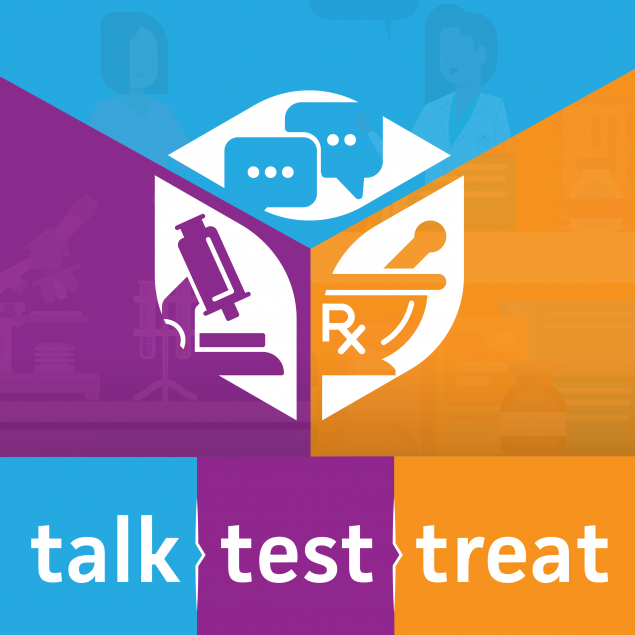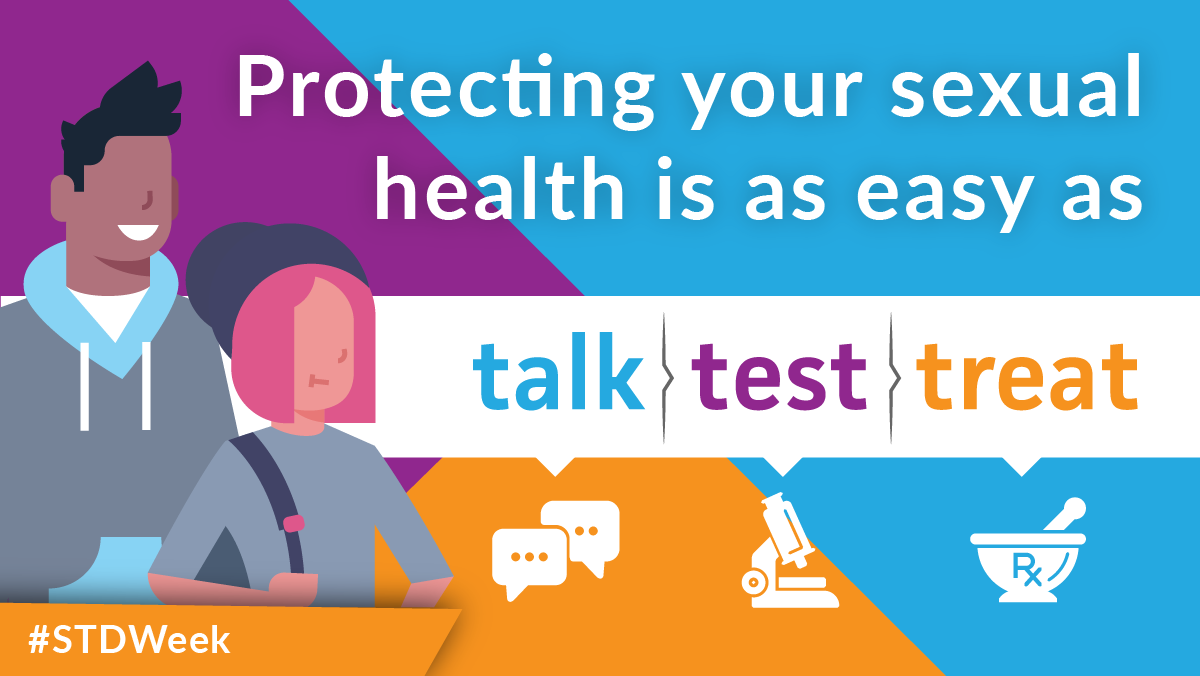STD Awareness Week, observed the second full week in April, provides an opportunity to raise awareness about STDs and how they impact our lives; reduce STD-related stigma, fear, and discrimination; and ensure people have the tools and knowledge to prevent, test for, and treat STDs.
False assumptions about STDs – how they’re spread, prevented, and treated – are everywhere, and it can be especially hard for people to get the facts. Making sure that you have the correct information about STD prevention and testing has never been more important.
If you are sexually active or thinking of becoming sexually active, it is important that you Talk. Test. Treat. to protect your health. These three small actions can have a big impact on your sexual health!

TALK
Talk openly and honestly to your partner(s) and your healthcare provider about sexual health and STDs. Talk to your partner about when you were last tested and suggest getting tested together. And if you have an STD, tell your partner. These conversations may seem hard to have, but open communication with your partner is essential to staying healthy and stopping the spread of STDs. Not all medical checkups include STD testing, so don’t assume that you’ve been tested unless you discuss it with your provider.
TEST
Get tested. It’s the only way to know for sure if you have an STD.
STD tests are quick, simple, and usually painless. For example, rapid HIV tests can provide results from just a swab inside the mouth in only 20 minutes.
TREAT
If you test positive for an STD, work with your healthcare provider to get the correct treatment.
Some STDs can lead to serious health problems if they’re not treated. For example, an untreated STD, like chlamydia, can make it difficult or impossible for a woman to get pregnant. An untreated STD can also increase the chances of giving or getting HIV.
It’s important to know that all STDs, even HIV, are treatable, and most are curable. The sooner you get tested, the sooner you can take action to protect your health and the health of your partner(s).
Below are some facts about STDs.
STDs impact young people the hardest. In the U.S., half of all new STDs are in people under 25 years old.
If you are sexually active, you can lower your risk of getting an STD several ways, including by using a latex condom the right way from start to finish.
Almost all STDs that can be spread via condomless vaginal sex also can be spread through oral and anal sex without a condom.
You can’t tell if someone has an STD just by looking at them. Many STDs don’t cause any symptoms, so the only way to know for sure is to get started.
Even if you use birth control, you should still think about STD prevention. Birth control methods like the pill, patch, ring, and IUD are very effective at preventing pregnancy, but they do not protect against STDs and HIV.
The most reliable way to avoid STDs is to not have vaginal, anal, or oral sex.
Hence, if you are sexually active, getting tested for STDs is one of the most important things you can do to protect your health! 
Source: Centers for Disease Control and Prevention
